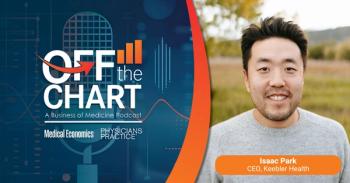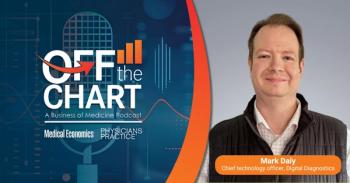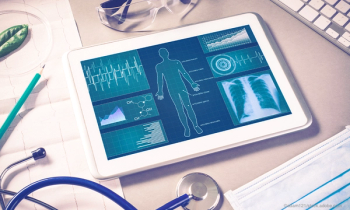
The Tech Doctor: Technology 101
Expert Rosemarie Nelson explains how to make the most of the technologies you already have.
What do practices want from technology? In a word, “efficiency.” We want to be able to do things better, with less effort and more accuracy, and do them only once. There are lots of technology solutions specific to tasks such as managing phone calls, determining patient insurance eligibility, scheduling appointments, tracking patient services, ordering supplies, and storing patient information.
What ability is central to all these wants and the technology solutions that address them? Keyboarding.
Yes, the typing skills that many of us failed to pick up in high school can play a huge role in being able to maximize current technologies. Think about it: All of a practice’s staff members must feel comfortable using PCs and be able to type with some degree of efficiency to enter data you will need to retrieve again and again.
Therefore, the first technology add-on I recommend for any practice is a typing/keyboarding skills software application. Enroll your staff members - clinical and administrative - in a class or an online program to help them develop and practice their keyboarding skills. Allot time during the workweek for all staff who must use PCs in the course of their duties to actively participate in the program. You will reap the benefits garnered from such an investment for months and years to come as your group adopts additional technologies (perhaps even that EMR) that require all staff to spend more time with their keyboards.
Technology simplified
How can something as simple as keyboarding hold the key to helping your practice access the latest technologies? Consider this: If you have one, your network server essentially operates as a central file cabinet for your staff. Each PC connected to your server can access a variety of folders in which you can store commonly used forms for ready use. Any staff member with network access can easily fill out individual forms and print clean documents as needed. This is quite an improvement over photocopying a photocopy of a form that ultimately produces a document of such poor quality it becomes illegible.
Your server can hold a plethora of information: phone lists, spreadsheets indicating which labs are associated with which payer, phone numbers for local pharmacies and testing centers, and contact information for referral physicians. Make such information even more readily available by placing Windows shortcuts on the desktop of each staff member’s PC, negating the need to search your virtual file cabinet for regularly accessed items.
Here are some additional simple, inexpensive technologies that can help your practice run more smoothly:
- Purchase an “all-in-one” device and place it at your nursing station. If you can save your nurses footsteps by placing a local printer/fax/copier in front of them, you will give them more time for direct patient care.
- Purchase software that allows you to scan your forms and create electronic documents for efficient patient information management. When additional patient requests come in, retrieve the form you have already created and modify only those fields the new request requires. This simple technique can save your nurses significant time when completing back-to-work forms, back-to-school forms, immunization records, and many other commonly used templates. Again, more efficient use of your nurses’ time can translate into more patients seen each day.
- Invest in a high-speed, high-quality scanner and scan and index your archived patient charts. You will reduce storage space and gain immediate access to old charts when the patients you haven’t seen for a while turn up again. Your billing office can be another prime benefactor of digital filing. It’s likely that your billing staff spends hours each week filing EOMBs (Explanation of Medical Benefits) and then retrieving those same EOMBs for secondary billing or resubmission. An alternative to in-house scanning (which can be time-consuming) is the lockbox approach. Speak to your bank about its lockbox services, which can provide electronic access to scanned images of checks and EOMBs it has processed on your behalf.
- Provide your staff automated appointment reminder tools to greatly enhance your practice’s daily operations by further freeing up their time for patient care and services.
- Give your providers a PDA charge-capture tool during rounds to reduce the lag time between service delivery and charge posting. Ask your practice management system vendor if it offers interfaced solutions for automated reminders and charge capture.
- Put the Web to work for you. Give your nurses access to the Internet, and tell them to order medical and surgical supplies (and office supplies) online to minimize time spent schmoozing with sales representatives. Use the Internet to schedule pharmaceutical rep visits based on your schedule, and teach your staffers how to track down patient addresses with Web-based reverse phone lookups.
Bottom line: You don’t need to invest a lot of money in technology add-ons to increase your office’s operational efficiency. You
do
need to use what you have, and that may mean some staff training. You may also need to add more PCs to your nurse stations to support new functionalities. If your staff starts battling for computer time, that’s a true measure of how much they have adopted technological short cuts to increase their efficiency.
Rosemarie Nelson is a well-known healthcare technology guru and principal with the Medical Group Management Association’s Health Care Consulting Group. She can be reached via
This article originally appeared in the July/August 2006 issue of Physicians Practice.
Newsletter
Optimize your practice with the Physicians Practice newsletter, offering management pearls, leadership tips, and business strategies tailored for practice administrators and physicians of any specialty.














